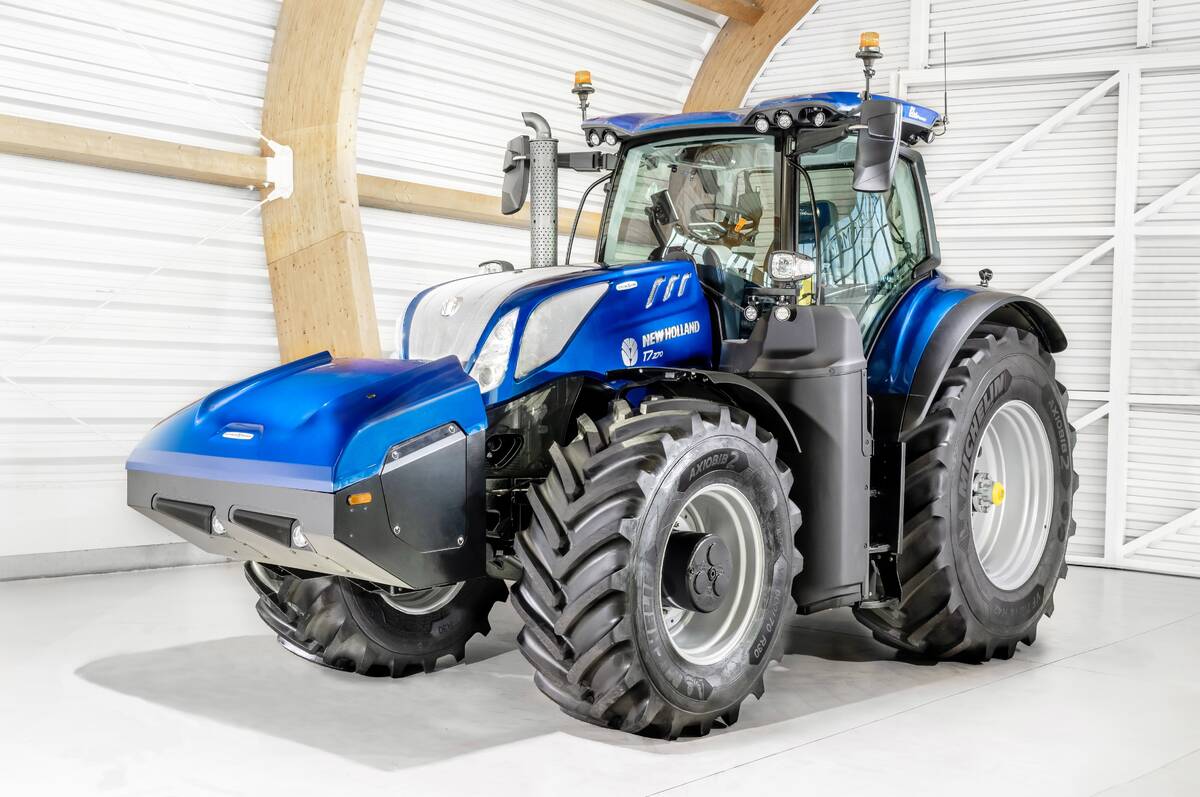HANOVER, Germany —The Western Producer was in Germany last week for the giant farm show, Agritechnica.
Every two years, the world comes to Hanover to find out how the planet’s engineers, machinery designers and technology providers have been keeping themselves busy.
This edition of the event tells me that those folks haven’t been getting much sleep lately.
Not only have they been building and selling machinery at record rates, but companies have been pouring money into their research and development departments.
Read Also

Methane tractor debuts at Agritechnica 2025
New Holland has unveiled its production-ready version of a T7.270 methane-powered tractor at the Agritechnica farm machinery show in Hanover, Germany.
Profitability in the grain and oilseed sector has driven those sales.
For many successful companies in the farm sector, new product development is paid for with a steady increase in sales.
As a result, farmer spending on new gear is benefiting the next generations of machinery technology and accelerating the progress of developments that will in turn make producers more profitable in the future.
Only six years ago, I was writing stories about layoffs in the farm machinery industry and.
More quietly, engineering group leaders were telling me they had hard drives full of great ideas that wouldn’t be getting off their electronic drawing boards unless they involved reducing farm equipment manufacturing costs.
A decade of unpredictable and generally diminishing returns for farmers had taken its toll on machinery makers.
Governments had begun to reduce financial security programs for farmers, so the outlook was for fewer, larger operations and tight operating budgets.
At that time, one couldn’t help but notice when attending agricultural engineering conferences that there was a lack of young engineers brimming with the skills and enthusiasm that are needed to feed any industrial sector’s technological growth. They were as rare as young farmers during the same period.
New companies entering the industry were rare. Back then, veteran ag engineers spoke of the pending changes to diesel engine regulations and what a challenge it was going to be to get farmers to pay increased costs for new, environmentally friendly machinery that would deliver marginal benefits to the grower.
Those imposed regulatory costs were taking up machinery R and D dollars and there was little corporate appetite to spend on new product development, especially if it involved retooling a factory or worse, making a major technology shift.
Wind the clock forward to 2013 and fly half way around the world to Germany, where last week, 27 football field sized buildings were crammed with technology that in 2007 was mostly just hard drives full of dreams.
The agricultural technology generated from the current commodity price boom will make farmers more efficient and profitable. In turn, that will fuel producers’ future purchases and result in more money spent on engineers’ salaries and new companies entering the farm equipment industry.
It will be good for farmers, and the cycle will repeat as long as there is money in the system.














